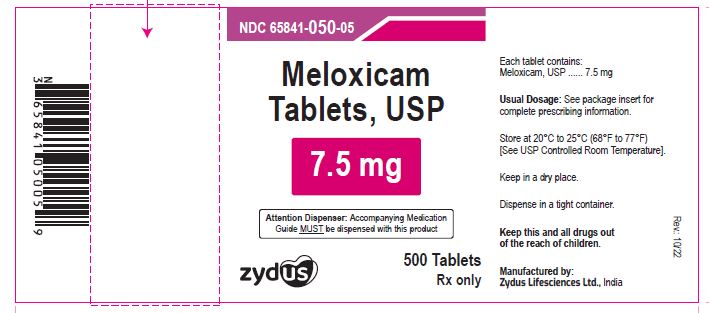Meloxicam is a nonsteroidal anti-inflammatory drug (NSAID) commonly used to relieve pain and reduce inflammation. Here’s information about its uses, benefits, common symptoms, and potential side effects: Meloxicam Tablet Uses Benefits and Symptoms Side Effects

Uses and Benefits of Meloxicam:
- Pain Relief: Meloxicam is used to relieve pain associated with various conditions, such as osteoarthritis, rheumatoid arthritis, and other forms of inflammatory arthritis.
- Reduction of Inflammation: Meloxicam helps reduce inflammation in the body, which can alleviate symptoms like swelling, stiffness, and joint pain.
- Musculoskeletal Disorders: Meloxicam may be prescribed for the treatment of musculoskeletal disorders, including bursitis and tendonitis.
Common Symptoms and Side Effects of Meloxicam:
- Gastrointestinal Effects: One of the most common side effects of meloxicam is gastrointestinal discomfort. This can manifest as stomach pain, indigestion, heartburn, nausea, vomiting, or diarrhea. Taking meloxicam with food or using antacids can help reduce gastrointestinal irritation.
- Increased Risk of Cardiovascular Events: Like other NSAIDs, meloxicam may slightly increase the risk of cardiovascular events such as heart attack or stroke, especially when used at higher doses or for long periods. This risk may be higher in individuals with pre-existing cardiovascular conditions or those taking certain medications.
- Fluid Retention and Edema: Meloxicam can cause fluid retention and edema, particularly in individuals with pre-existing heart failure or kidney problems. Monitoring for signs of edema, such as swelling in the legs or ankles, is important.
- Hypersensitivity Reactions: In rare cases, meloxicam can cause allergic reactions characterized by symptoms such as rash, itching, swelling, or difficulty breathing. Seek immediate medical attention if you experience any signs of an allergic reaction.
- Renal Effects: Prolonged use of meloxicam may affect kidney function, especially in individuals with pre-existing kidney disease. Regular monitoring of kidney function is typically recommended.
- Blood Disorders: Rarely, meloxicam can cause changes in blood cell counts, leading to conditions such as anemia or decreased platelet count. Regular blood tests may be conducted to monitor these parameters.
- Liver Effects: Meloxicam can rarely cause liver enzyme elevations, which can be detected through blood tests. Regular monitoring of liver function is important during treatment.
- Skin Reactions: Meloxicam may cause skin reactions, including rash, hives, or blistering. If you develop any skin changes, notify your healthcare provider.
It’s important to take
meloxicam as prescribed by your healthcare professional and follow their instructions regarding the dosage and frequency of administration. Inform your healthcare provider about any pre-existing medical conditions, medications, or supplements you are taking to ensure the appropriate use of meloxicam.
If you have any concerns or experience
troubling side effects while taking meloxicam, consult with your healthcare provider for further evaluation and guidance. They can provide personalized advice based on your specific situation and help determine the most appropriate use of meloxicam for your pain or inflammation management.
Meloxicam Tablet Uses Benefits and Symptoms Side Effects Meloxicam Tablet in hindi Meloxicam Tablet in hindi






